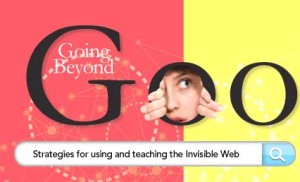
Librarians have always welcomed users’ suggestions for titles to add to the collection. When those titles meet the guidelines on subject matter, format, and price, librarians are happy to buy patron-suggested material. Some libraries even offer suggestion forms on their website.
However, in the same way that many librarians have moved away from title-by-title selection for at least some of their collection development activities, so too can libraries provide automated, large-scale opportunities for patrons’ interests to drive routine acquisitions. In short, patron-driven acquisition (PDA) is “a flexible tool that can be used to complement traditional collection development,” says Dracine Hodges, head of acquisitions at Ohio State University Libraries.
PDA adds materials through:
Purchases triggered by interlibrary loan (ILL) requests. Librarians establish criteria by which book titles submitted by their patrons as ILL borrowing requests will be bought instead of borrowed. Variables include publication date, appropriateness for the collection, price, and availability for quick shipment by an online bookseller or the library’s jobber. When the books arrive, they are either lent directly to patrons from the ILL desk or cataloged first and then circulated as usual. This model can include buying nonbook materials such as DVDs if they meet the purchase criteria. Some libraries also fill eligible ILL requests by buying ebook editions when available, then notifying users with access instructions.
Purchases triggered by use after discovery as an ebook. Librarians work with one or more PDA ebook vendors, either directly or through their book jobber, to establish a profile similar to an approval plan. Titles matching the profile are regularly added into the library’s catalog. As patrons discover and open the ebooks, the vendor charges the library. Choices vary, but librarians typically set a threshold of several uses on a rental basis; the purchase occurs on the next use after the rental threshold has been reached.
Purchases triggered by selection from a vendor’s list. Some libraries load at least part of their jobber’s current book list into their catalog. Patrons can easily request the books that they want, allowing time for shipping.
Mix-and-match option. Librarians choose more than one model for fast access to materials patrons need.
PDA plans offer several advantages for good customer service and an alternative to collection building:
- Most PDA plans can be customized to accommodate different budgets and criteria;
- In some models, the library can offer many more titles than it could ever afford to purchase but only pays for those that are actually used;
- In the ebook model, patrons typically use a relatively low percentage of the total number of titles offered, and the rental fee generally costs less than ILL.
Buying PDA titles often occurs without patrons knowing their reading patterns result in permanent acquisitions. Nick Schenkel, director of the West Lafayette (Ind.) Public Library, says his library’s PDA program is “wildly successful.” An additional benefit: “Books chosen through our PDA program circulate many times more than most books and media that we purchase through our traditional librarian-led selection process.” Academic librarians who analyze their PDA data confirm this pattern.
PDA has also made a difference at the University of Denver Libraries, where Associate Dean Michael Levine-Clark reports: “Because PDA makes it possible to buy only what we need and to pay only for the level of need, it allows us to provide a much broader and deeper collection than we ever could under a traditional collection development model. While PDA can be used to save money, its real value is that it allows libraries to provide a wider range of materials to their users.”
Involving users in the selection process does not completely replace the librarian’s role in collection development. But it does offer a quick, easy, and effective avenue for adding many titles that not only meet patrons’ immediate needs but will also enjoy high use in the future.
SUZANNE M. WARD is head, collection management, at Purdue (Ind.) University Libraries.


